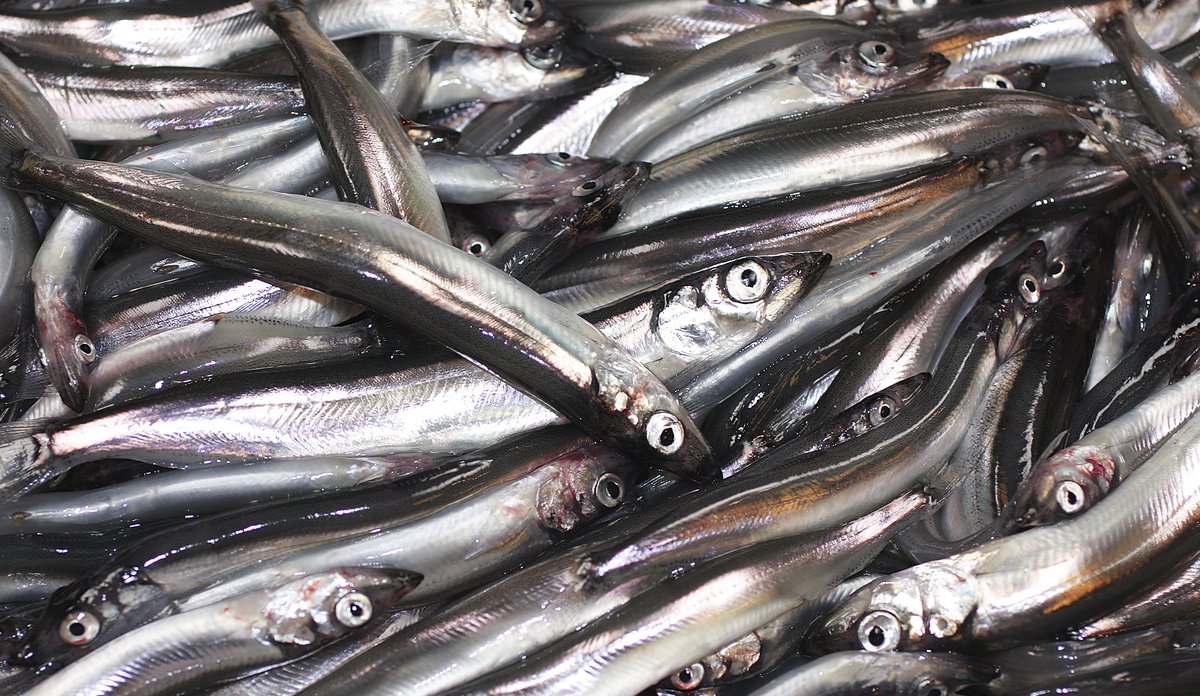In IMRpelagic/bifrost: Capelin assessment
knitr::opts_chunk$set(
collapse = TRUE,
cache = FALSE,
comment = "#>",
fig.path = "man/figures/README-",
out.width = "80%",
fig.height = 6,
warning = FALSE
)
Bifrost package
Sondre Hølleland, Samuel Subbey
Institute of Marine Research, Norway.
Correspondance to: sondre.hoelleland@hi.no, samuel.subbey@hi.no
Capelin assessment
This R package is a wrapper for doing capelin stock assessment.

Capelin from the Barent Sea. Source: hi.no, Photographer: Jan de Lange / Institute of Marine Research
Documentation
A more detailed description can be found at https://imrpelagic.github.io/bifrostdocumentation/.
Install package
To install the package, run the following code:
library(devtools)
install_github("IMRpelagic/bifrost")
The package uses TMB (Template model builder).
For windows users, use the following code:
library(devtools)
install_github("IMRpelagic/bifrost", INSTALL_opts = "--NO-MULTIARCH")
Maturity
Here is an example to play with if you want to estimate maturity for capelin. In the package we have included a three datasets to help you get started with running the maturity estimation. First of all, you need to load the data:
library(bifrost)
# -- load the data --
data(cap) # capelin abundance table
data(catch) # capelin catch data
data(maturityInitialParameters) # initial parameters for 1972-2019
head(cap)
head(catch)
head(maturityInitialParameters)
Having the data loaded, we can set up the estimation procedure for the year 2003:
year <- 2010
#.. Create data list: ..
data.list <- createMaturityData(cap,
catch,
min_age = 2,
max_age = 3,
start_year =1972,
end_year = 2010)
# ..set up parameter list..
par.list <- createMaturityParameters(parameter = maturityInitialParameters,
year = data.list$start_year, agegr = "2-3")
mFit <- estimateMaturity(data = data.list, parameters = par.list, silent =TRUE)
#.. Print estimates..
summary(mFit)
You can also run all years sequentially using the following function:
result <- runMaturityYearByYear(cap = cap, catch = catch, initPar = maturityInitialParameters,
min_age = 3, max_age = 4, plot = TRUE)
result$plot
plot(result)
Estimate consumption
data("consumptionData")
par.list <- list(
logCmax = log(1.2),
logChalf = log(1e2),
logalpha = log(2),
logbeta = log(2),
logSigma = log(1e3)
)
cFit <- estimateConsumption(data = consumptionData, parameters = par.list, silent =TRUE,
map = list(logalpha = factor(NA),
logbeta = factor(NA)))
cFit
summary(cFit)
Run simulations
We can run the simulation from October 1st to January 1st:
sim <- bifrost::captoolSim(mFit, nsim = 15000)
plot(sim)
We can also run the full simulation until April 1st:
catches <- 1000*colSums(catch[catch$year == 2010, c("spring01", "spring05", "spring04")])
fSim <- runFullSim(mFit, cFit, catches, nsim = 15000)
plot(fSim)
References
Put link to papers here.
In the development of this package, we have used
Licence
This project is licensed under the MIT licence - see LICENSE.md for details.

IMRpelagic/bifrost documentation built on Oct. 17, 2023, 7:11 a.m.
knitr::opts_chunk$set( collapse = TRUE, cache = FALSE, comment = "#>", fig.path = "man/figures/README-", out.width = "80%", fig.height = 6, warning = FALSE )
Bifrost package
Sondre Hølleland, Samuel Subbey
Institute of Marine Research, Norway.
Correspondance to: sondre.hoelleland@hi.no, samuel.subbey@hi.no
Capelin assessment
This R package is a wrapper for doing capelin stock assessment.

Capelin from the Barent Sea. Source: hi.no, Photographer: Jan de Lange / Institute of Marine Research
Documentation
A more detailed description can be found at https://imrpelagic.github.io/bifrostdocumentation/.
Install package
To install the package, run the following code:
library(devtools) install_github("IMRpelagic/bifrost")
The package uses TMB (Template model builder).
For windows users, use the following code:
library(devtools) install_github("IMRpelagic/bifrost", INSTALL_opts = "--NO-MULTIARCH")
Maturity
Here is an example to play with if you want to estimate maturity for capelin. In the package we have included a three datasets to help you get started with running the maturity estimation. First of all, you need to load the data:
library(bifrost) # -- load the data -- data(cap) # capelin abundance table data(catch) # capelin catch data data(maturityInitialParameters) # initial parameters for 1972-2019 head(cap) head(catch) head(maturityInitialParameters)
Having the data loaded, we can set up the estimation procedure for the year 2003:
year <- 2010 #.. Create data list: .. data.list <- createMaturityData(cap, catch, min_age = 2, max_age = 3, start_year =1972, end_year = 2010) # ..set up parameter list.. par.list <- createMaturityParameters(parameter = maturityInitialParameters, year = data.list$start_year, agegr = "2-3") mFit <- estimateMaturity(data = data.list, parameters = par.list, silent =TRUE) #.. Print estimates.. summary(mFit)
You can also run all years sequentially using the following function:
result <- runMaturityYearByYear(cap = cap, catch = catch, initPar = maturityInitialParameters, min_age = 3, max_age = 4, plot = TRUE) result$plot plot(result)
Estimate consumption
data("consumptionData") par.list <- list( logCmax = log(1.2), logChalf = log(1e2), logalpha = log(2), logbeta = log(2), logSigma = log(1e3) ) cFit <- estimateConsumption(data = consumptionData, parameters = par.list, silent =TRUE, map = list(logalpha = factor(NA), logbeta = factor(NA))) cFit summary(cFit)
Run simulations
We can run the simulation from October 1st to January 1st:
sim <- bifrost::captoolSim(mFit, nsim = 15000) plot(sim)
We can also run the full simulation until April 1st:
catches <- 1000*colSums(catch[catch$year == 2010, c("spring01", "spring05", "spring04")]) fSim <- runFullSim(mFit, cFit, catches, nsim = 15000) plot(fSim)
References
Put link to papers here.
In the development of this package, we have used
Licence
This project is licensed under the MIT licence - see LICENSE.md for details.
Add the following code to your website.
For more information on customizing the embed code, read Embedding Snippets.
